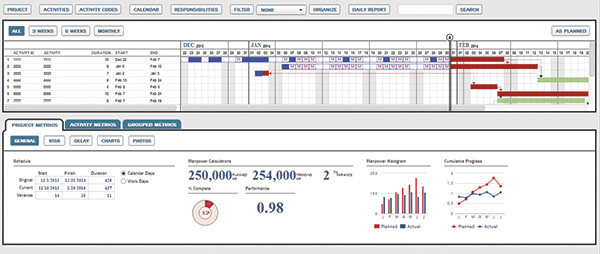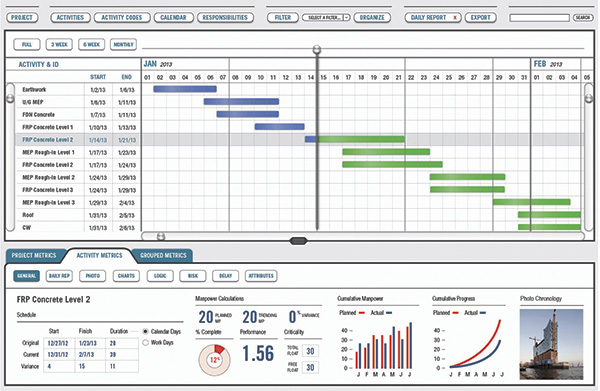Most people would probably agree that more information is always better, particularly as it relates to understanding complex scenarios and making tough financial decisions. This is particularly true in the construction industry due to the complex nature of the industry as well as the sheer magnitude of the cost of commercial construction projects. In an age when information transfer is at an all-time high, you might think that one of the oldest and largest industries in the world would have adopted strong methodologies to capture, store and analyze information in a manner that would promote success. However, my experience in the industry tells me otherwise, and this lack of information processing has a negative effect on everyone involved.
Having spent nearly 15 years as a consultant in the commercial construction industry advising owners and contractors in various capacities, I have found that data organization, storage and analysis are processes that most industry professionals could improve upon. I believe that the industry-wide lack of strong data management protocols is a driving force behind many of the challenges that have plagued the commercial construction industry, including the following:
- Historically low profit margins
- Delay occurrences in 90 percent of commercial construction projects
- Budget overruns on 75 percent of commercial construction projects
- Industry-wide productivity factor that has decreased 20 percent in the last 50 years
- Dispute occurrences on approximately 25 percent of commercial construction projects
Contractors continue to build bigger and better structures while testing the boundaries of time and monetary constraints—it is an exciting and remarkable industry. However, I have been a part of many struggling projects and have seen relationships go sour for reasons that could have been avoided had the parties done a better job of capturing, storing and analyzing data throughout the project life cycle.
 This is a live version of a schedule that shows critical path method (CPM) schedule plan, historical as-built and project metrics.
This is a live version of a schedule that shows critical path method (CPM) schedule plan, historical as-built and project metrics.Data analytics is easier said than done, particularly in the construction industry, due to the sheer volume of data produced for every project. However, with discipline and an understanding of which data is most important, data analytics is well worth the effort. It’s about collecting the right data, organizing it in manner that “speaks” to you and understanding how to use it to your advantage.
The Secret to Effective Data Analysis
To be effective at data analysis, you must accomplish three important things: capture data in real time, capture data in a “granular” form and organize it in a telling manner. The secret to successful data analysis in construction is preparation of a detailed and well-organized “as-built” schedule. An as-built schedule is a data structure that shows work over time, much like a project schedule, except it shows actual data instead of planned work. An as-built schedule is not to be confused with historical outputs in standard critical path method (CPM) scheduling software, as it needs to have much more data imbedded than that.
In general, a well-prepared as-built schedule will show which work was performed and when, who was working on it for how many hours, what kind of progress was made each day and what issues impacted the work. The most useful data to include in an as-built schedule is manpower, daily progress, impacting issues, project correspondence (RFIs, change orders, submittals, inspection reports, etc.) and photos. It is highly recommended that this data be captured in real time on a daily basis and that it be associated with the activities it represents in the project schedule. This may sound like a tall order, but it isn’t much different that the daily reporting process; it just requires slightly more discipline and a database. The more detailed and accurate the information is, the more apparent the driving factors behind the issues will become when studying the as-built schedule.
As-built schedules are effective because, if prepared correctly, they will house all the information you need to truly comprehend every issue resulting in a deviation from the plan, they have the ability to prove causation and responsibility, and they are useful in predicting future impacts caused by the issues identified. In short, as-built schedules combine transparency, accountability and predictability, all in one shot.
 This is a schematic of Construx software solutions that shows project schedule and project relevant metrics.
This is a schematic of Construx software solutions that shows project schedule and project relevant metrics.How to Use This Data
This type of data analysis is useful in a dispute environment, but it can be much more powerful than that if studied on a regular basis while the project is ongoing. Real-time analysis of data enables you to correct issues before they become real problems or, in some cases, mitigate the impacts caused by forming new strategies that take those issues into account.
The first thing you should do with this data is study productivity and performance on micro levels. Through this process, you can pinpoint manpower overruns and delays for every activity on the schedule. By analyzing each activity, you will begin to see patterns, which will help you prove causation and responsibility and determine corrective measures on more macro levels—such as phase, trade, location or area.
With this information, you will have the ability to discuss problems and solutions with the other parties involved. If the data is granular enough, causation and responsibility will be clear, resulting in easier conversations and significantly fewer disputes.
By studying the same data in real time, you will have a clearer understanding of project-relevant risks that will likely effect future work. By adjusting the plan to account for project-relevant risk and seeing the end result, you can prepare mitigation strategies to respond to risks or resolve the issues with the other parties involved.
The bottom line is this: By capturing data on a granular level, organizing it in an effective manner and studying it against the plan in real time, you will obtain much more knowledge about your projects. This knowledge will only help strengthen the risk management and decision-making processes and, in turn, result in decreased exposure to budget overruns and delays, while eliminating the threat of disputes. All of these results will drive risk down, push profits up and create a competitive advantage for whoever decides to make the effort to study the data—and that is powerful.
